A client hired me to create a microsite for their Church with basic, easy to access info that was optimized for mobile devices. My business partner and I saw an opportunity after the positive response to this little web app so we ended up building a full fledged platform as an extension of this one off project.
After a lot of positive feedback from the client and directly from users, it was apparent there was a gap in the market, these organizations were totally underserved.
Much of the information pertinent to organizations in the Church market had the same problems. It was:
- disorganized
- hard to find
- often inaccurate
- and not displayed in any kind of standardized way
Also, the primary method of the communication from the religious organization to their patrons – outside of patrons simply traveling to be physically on site for a weekly service – was being handled via print media. A free, weekly printed bulletin offered to patrons, like a newsletter, that had to be picked up, on site, at the physical location, once per week at a service.

So after the successful micro site which served as a nice prototype, the client partnered with me to develop this idea into a platform with more offerings so that similar organizations that also lacked the technical know-how to make their information readily available on mobile could have access to this same improved system.

We knew from analytics and interviewing users, exactly how most users used this App.
Users wanted to be able to pull up mission critical information quickly on their phone.
- When is the next service time?
- Is there a cancellation due to weather?
- How can I easily donate?
These issues for users are the same across every one of the individual Church organizations that make up the denomination.
But the technology opens up a new world of possibilities when taking into account the primary means of communication with patrons – the paper printed bulletin.
This gave me a compelling idea for a monetization model. Here’s what the back of the weekly paper bulletins look like:
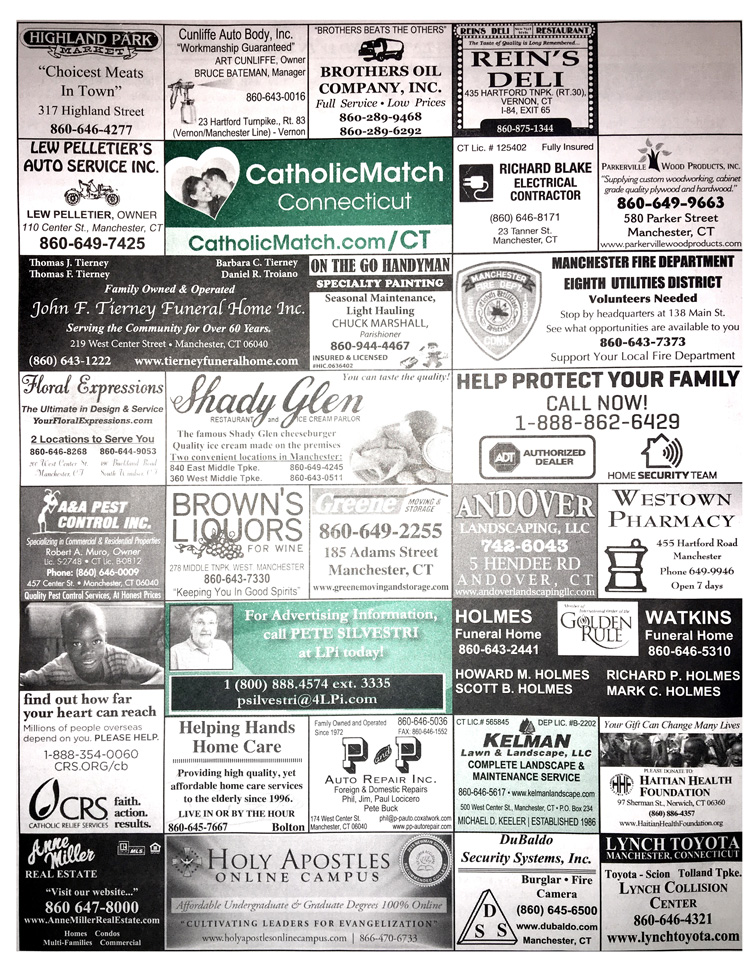
This advertising model is actually quite lucrative for these bulletin printing companies.
Working under the assumption that smartphone usage is only growing (it’s hard to even purchase a mobile phone model that is not some kind of Android device) and people of all ages carry mobile phones that are smartphones – iOS or Android, what if we offered a better bulletin, an interactive experience, with more up to date content, rich media, and features that simply can’t be implemented on print media?
Could we bring more value to patrons? Could we then create a better value proposition for Sponsors/Advertisers?
My hypothesis was this:
If we catalog useful information in an easy to access and searchable way, we will gain users, since there is no central easy to use location for this particular information and no central location with good, modern UX. Having individual microsites, or web apps gives us the opportunity to create relationships with individual Churches and sell ancillary services or future premium features. It also gives the impression to the user that the page is unique to, and belongs to the Church as an official source of information, building trust in a similar way to Facebook pages, or Yelp pages.
This allows us to monetize data and the platform. Once we gain some traction, we can use that data to prove to Churches the existent value, partner with them by offering better features and then gain business sponsors via advertisements.
I envision an exit via being acquired by a large bulletin/religious media company that currently has most of their model centered around paper bulletins and poorly designed tech offerings.
In order to effectuate this success we will require the following:
1. Easy to use UI that is widely compatible2. Ads on every web app, automatically, so we can monetize the model
3. A search bar on the homepage to make things easy to find
4. SEO and searchable by Google so that each individual Church app can be easily accessed via a Google search and highly ranked
5. A queue to manually process data so that Churches can be constantly onboarded and information updated to build our reach
6. An internal system to process a Sales cycle for advertisements once a Church organization is onboarded
We should get everything online as quickly as possible and then see the response. If there is any traction whatsoever we will learn it very quickly and can invest in a better infrastructure. We should only invest what it takes to get to the mission critical elements listed above so that we can prove some sort of success as quickly as possible.
ChurchMobile Proposal Report, 2017
So I designed a system where we could process large amounts of data and onboard large numbers of Churches so that all this information could be displayed properly.

Some of the internal tools I created for this system are the most complex work I’ve done. But all served a higher purpose.
Here was my plan to grow the business:
- Ingest existing information about Churches from various sources into our internal system
- Create sample Apps for individual Churches
- Contact each Church and demonstrate what we offer, completely free of charge to them
- Provide administrative access to the App so the Church can add more details and maintain control
- With the Church’s permission, reach out to current Sponsors and sell them advertising on the App (with realtime metrics) instead of antiquated print advertising
We began with a large data set of information on Churches all over the United States, and I designed various processes for verifying and improving this data.
At first, I leveraged Amazon mechanical turk for some data, but that didn’t work best for our use case. It was inefficient.
I decided the specialized nature of the data collection required a person to have more insight into how we use the data and why it was important, so it was more efficient in groups of larger chunks which provided more context. I ended up hiring contractors that worked on the information about 1 entire organization at the same time. This task included verifying address and phone number data, adding in their weekly PDF news bulletin, and finding an image of the Church building online or using Google Maps.
But in order to do this, the system grew even more complex.

Sourcing Data For Sales Leads with Internal Tools
Each Church has a local bulletin almost always printed by one of 3 companies. These companies offer these paper bulletins to the Church who write up information about the ongoings of the organization and provide them to their Patrons for free. The companies that print the bulletins also provide them to the Church for free and in turn partner with the Church to find local companies the sponsor print production via advertising on the reverse cover.
My goal was to convert the companies already paying for print advertisements to digital ads in the respective Church’s App.
Here, I leverage some work experience I had helping print companies make the transition to primarily digital offerings.
First, I needed a way to ingest sales leads into our custom CMS tracker that I specially designed for our sales agents.
I developed an internal tool that for every individual Church instance turned the pages of the PDF bulletin into a JPG and displays it on a page. It was really difficult to get an automated process to automatically select each advertisement because of their differing sizes. It could have been done, but the cost-benefit did not make sense given the timeline so I opted for a human operated process to draw boxes around each ad.
On the front end, the user can draw boxes around each advertisement, then the system will split them each into their own JPG file, assign it a unique identifier and link it to the Church.
This file is then added to a queue where a worker can catalogue information about each advertisement into the system so it can be presented to sales agents. The agents can use this information to contact each business on a sales call. I integrated Twilio so we could simply text a sample link to a lead’s phone.
We used “spec ads” to show prospects what their ad could look like in full color.
However, before all this happens, we create the App for the Church.
Early Business Logic
- Church gets added to database from known Dataset
- Scraper pulls bulletin code from bulletin providers
- Data Entry Contractor:
i. verifies bulletin
ii. verifies church information
iii. uploads photo of church - Bulletin ingested into PDF Util, slices of ads get catalogued with unique IDs
- Human deletes slices that are not needed
- Slices move to Mturk, Get resulting Business information back
- Data Entry Contractor verifies Mturk results
- Results move to sales app
- Sales Cycle
- Upon sale, SALES person must ask about what the ad desired to look like, business gets receipt & email asking for any branding etc. A reply to the email gets their artwork put in queue.
- Art contractor creates an ad for the business from a queue
Contractors upload goes into an approval queue, when approved, we send a demo email to the business - Art contractor creates top bar, first slide, and icon, that goes into an approval queue
- Church contacted by customer service, and when Church provides email, the setup email gets sent out
- Church admin creates password from link in email
- We request photos, logo/branding, mailing address, and 3 colors, mass times, etc.
- When Church art approved we generate a PDF poster, promotional cards and create a ShipStation order
- Hardcopies printed and mailed to Church
- 2 weeks from poster delivery we send an app ready message to the business sponsor offering to sign them up for included analytics
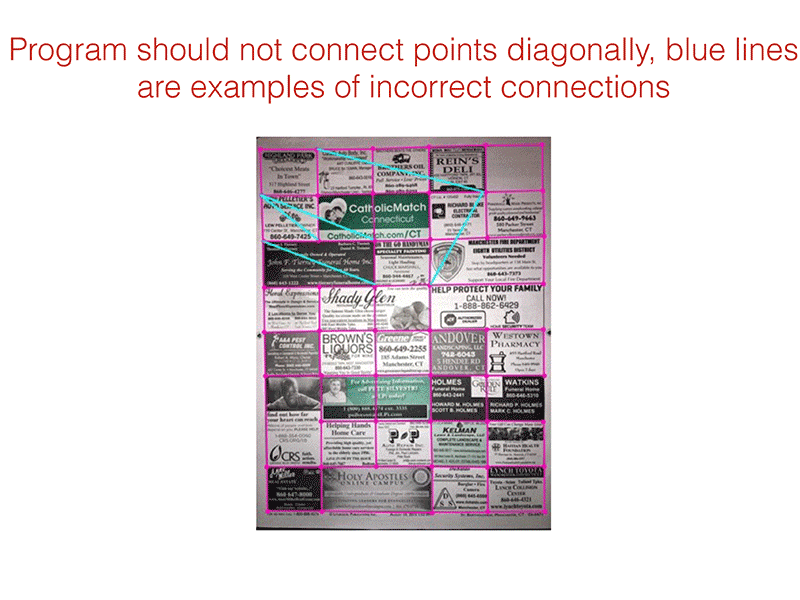
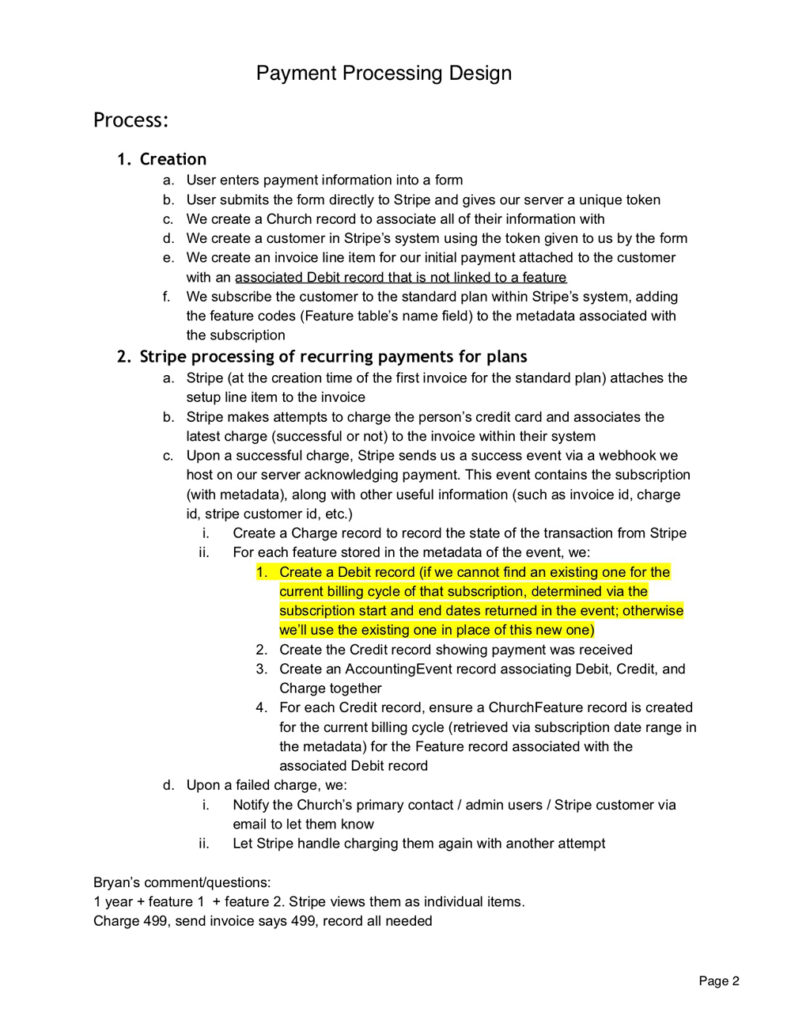



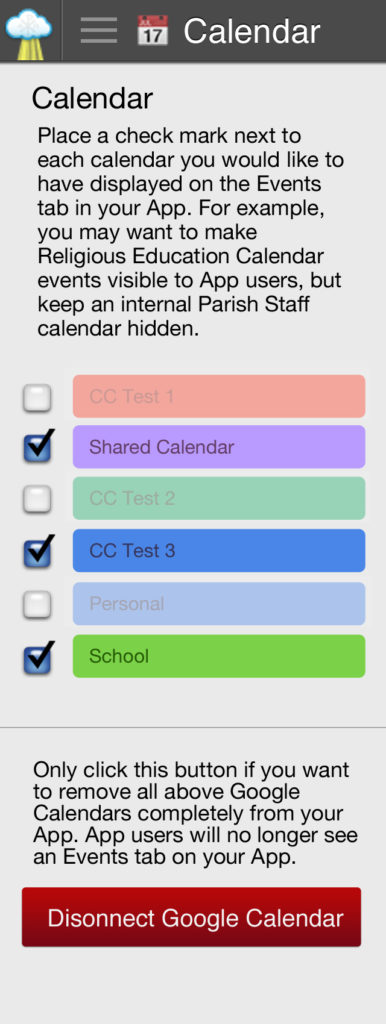
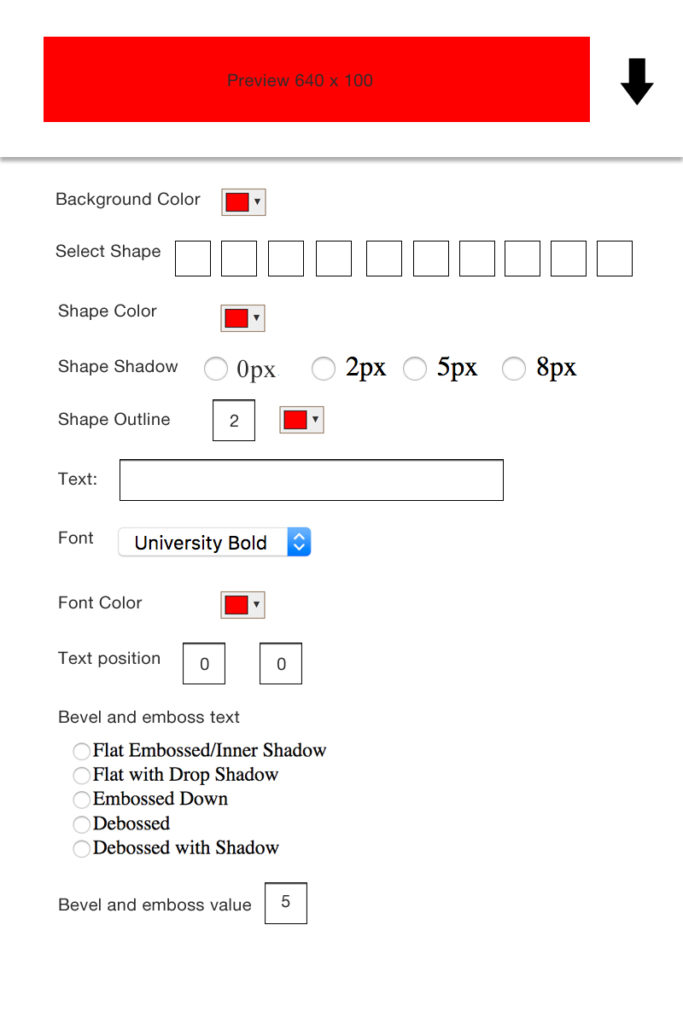



This strategy was highly successful in demonstrating to advertisers the value proposition of our digital offering versus their current advertising budget allocation. The differences are clear, you can’t track clicks on paper!

